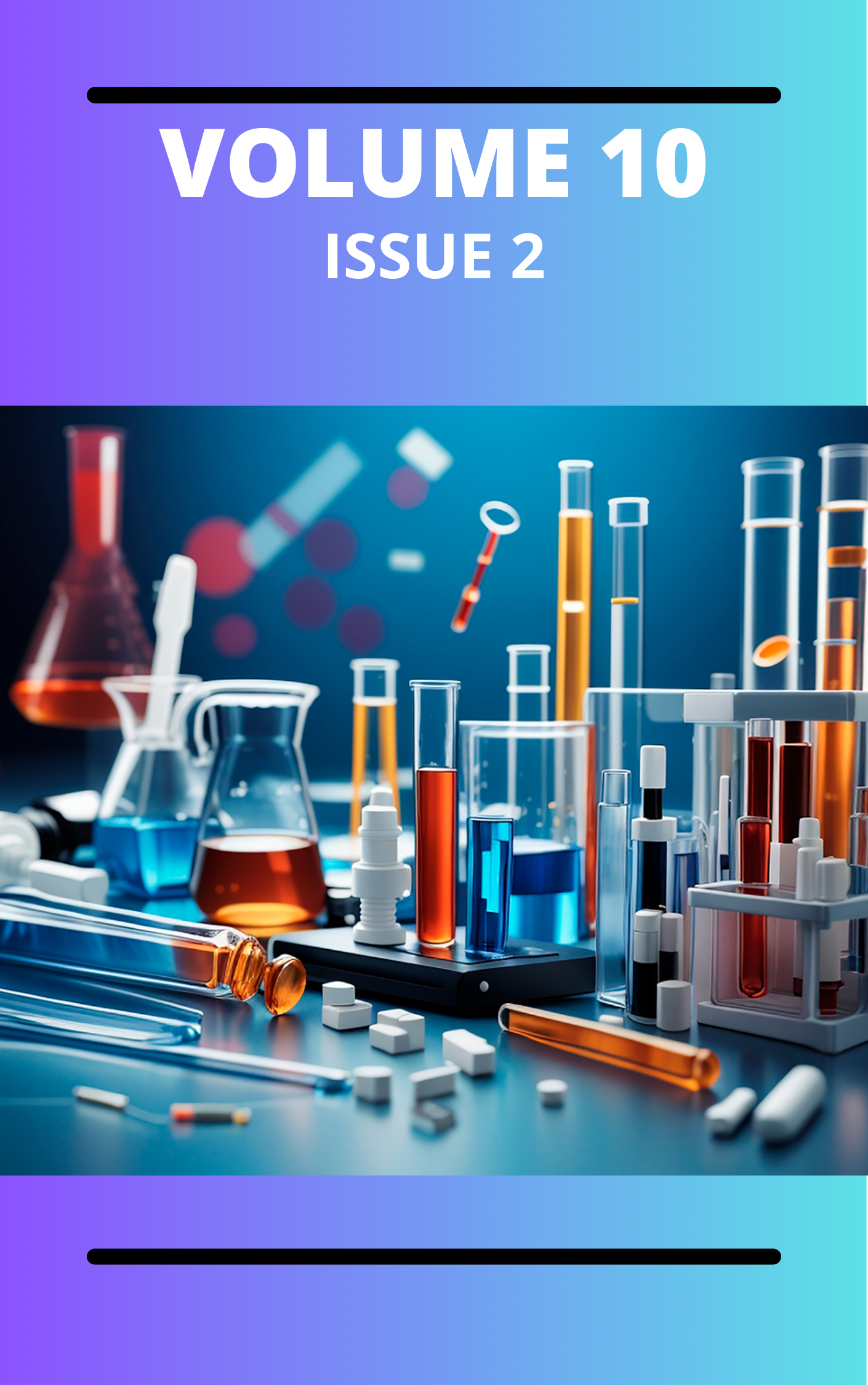Investigation of the Inhibitive Properties of Bio-Inspired Starch-Polyvinyl Acetate Graft Copolymer (Ps-Pvagc) on the Acid Corrosion of Mild Steel
Keywords:
Biopolymer, inhibition efficiency, corrosion rate, graft copolymerAbstract
Anticorrosive properties of potato and corn starch, potato starch-polyvinyl acetate graft copolymer (PS-PVAGC) and modified biopolymer. PS-PVAGC was prepared by grafting potato starch into PVA using a crosslinking agent. The modified biopolymer was synthesized by blending starch with NaOH and borax. The weight loss method was used to test the inhibitors on mild steel in 1.0 M HCl at room temperature, the observed changes in functional groups of the inhibitors during the entire experiment were monitored using the FTIR method. The results obtained showed that within 2 hours and a concentration of 4 g of the inhibitor, corn starch produced a very low inhibitor efficiency (IE) of 38.52%, while potato starch yielded a maximum IE of 79.81%. The modified biopolymer performed better with a maximum IE of 87.90% while PS-PVAGC performed best with a maximum IE of 92.5%. The inhibitors all reduced the corrosion rates as their concentrations were increased; however, the poor performance of pure starch can be attributed to its poor solubility in the acid solution and poor adhesive power on the metal surface. All formulations showed OH broad peaks (between 3446cm-1-3287 cm-1) as the major group offering heteroatom (i.e oxygen) for the adsorption of the inhibitor and subsequent suppression of the corrosion of the metal.
Downloads
Published
Issue
Section
Similar Articles
- Oluwafemi Samson Afolabi , Load-Bearing Capacity Analysis and Optimization of Beams, Slabs, and Columns , Communication In Physical Sciences: Vol. 6 No. 2 (2020): Communication in Physical Sciences
- Attah Chuks Emmanuel, Removal of Cadmium Ion from Aqueous Solution by oyster-based Based Calcium Oxide Nanoparticles , Communication In Physical Sciences: Vol. 10 No. 3 (2023): VOLUME 10 ISSUE 3 (2023-2024)
- Yahaya Zakari, Isah Muhammad, Najmuddeen Muhammad Sani, Alternative Ratio-Product Type Estimator in Simple Random Sampling , Communication In Physical Sciences: Vol. 5 No. 4 (2020): VOLUME 5 ISSUE 4
- Moses Owoicho Audu, Tsaviv Nyiayem Julius, Inikpi Ojochenemi Agada, Achu Paschal Aondohemba, Ishaq Shaibu Eneji, Health Risk Assessment of Heavy Metals and Radiation Exposure in Locally Produced Cosmetic Powders used in Benue State , Communication In Physical Sciences: Vol. 12 No. 6 (2025): Volume 12 ISSUE 6
- Yusuf James, Yisa Jonathan, Jimoh Oladejo Tijani, Razak Bolakale Salau, Elijah Yanda Shaba , Mr. , Communication In Physical Sciences: Vol. 12 No. 4 (2025): VOLUME1 2 ISSUE 4
- Benjamin Asuquo Effiong, Emmanuel Wilfred Okereke, Chukwuemeka Onwuzuruike Omekara, Chigozie Kelechi Acha, Emmanuel Alphonsus Akpan, A New Family of Smooth Transition Autoregressive (STAR) Models: Properties and Application of its Symmetric Version to Exchange Rates , Communication In Physical Sciences: Vol. 9 No. 3 (2023): VOLUME 9 ISSUE 3
- Kingsley Uchendu, Emmanuel Wilfred Okereke, A New Symmetric Bimodal Extension of Ailamujia Distribution: Properties and Application to Time Series Data , Communication In Physical Sciences: Vol. 12 No. 6 (2025): Volume 12 ISSUE 6
- Enefiok Archibong Etuk, Omankwu, Obinnaya Chinecherem Beloved, Human-AI Collaboration: Enhancing Decision-Making in Critical Sectors , Communication In Physical Sciences: Vol. 12 No. 2 (2025): VOLUME 12 ISSUE 2
- Emmanuel Wilfred Okereke, Sunday Ngozi Gideon, Kingsley Uchendu, Statistical Properties and Application of Bagui-Liu-Zhang Distribution , Communication In Physical Sciences: Vol. 8 No. 3 (2022): VOLUME 8 ISSUE 3
- Izuagbe Gilbert Osigbemhe, Essential Oil Composition and Anti-Microbial Activity of Zyzgium aromaticum (l) merril and Percy [fam. Myrtaceae] Using Hydro-Distillation and Solvent Extraction Methods , Communication In Physical Sciences: Vol. 12 No. 4 (2025): VOLUME1 2 ISSUE 4
You may also start an advanced similarity search for this article.




